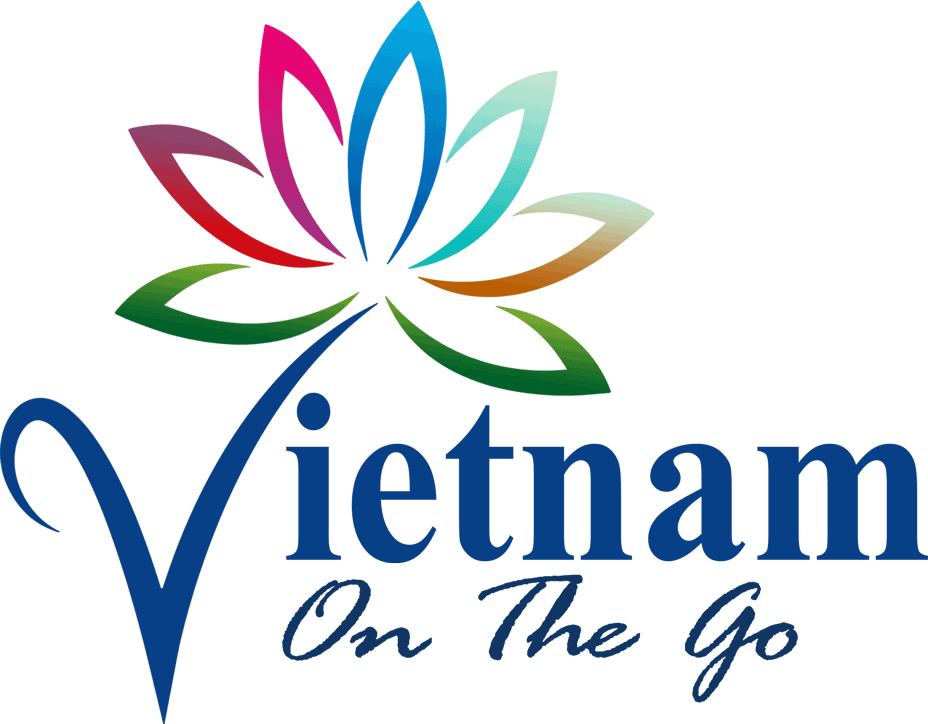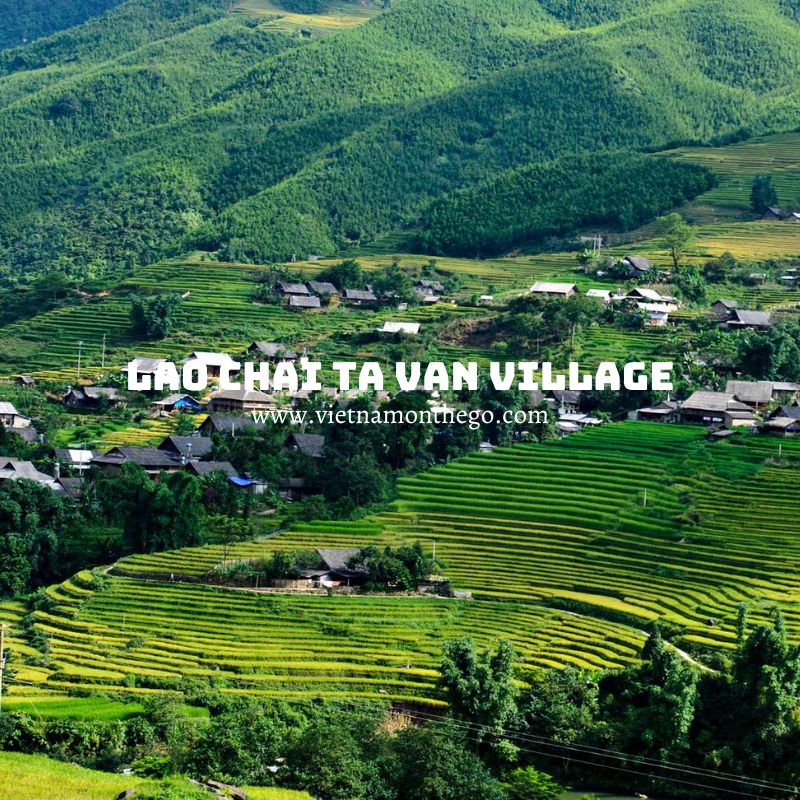Travel Guide, Sapa
Lao Chai Ta Van Village: Journey Through Terraced Time in Sapa
Sapa’s natural beauty is not the only thing that draws tourists here. But also to the quiet communities that the northwest village typifies. Few tourists are aware of Lao Chai. Lao Chai Ta Van Village lies in quiet anticipation of exploration, cast in the shadow of Sapa’s more well-known attractions, such as Fansipan Mountain, Sapa Town, and Cat Cat Village. Travelers visiting Vietnam will find Lao Chai Ta Van, which is untouched by mass tourism, to be peaceful, authentic, and a true encounter with the fascinating terraced rice fields and friendly local ethnic culture.
How to Get to Lao Chai Ta Van?
Lao Chai – Ta Van Village is among the most picturesque locations in Sapa, much like Y Linh Ho Village. Lao Chai Village’s incredibly untamed beauty has the power to enthrall any traveler. Lao Chai – Ta Van Village is comparable to the northwest mountains’ “poetic inspiration” for instant love.
Lao Chai – Ta Van Village is between 7 and 11 kilometers from Sapa Town, depending on the paths. Two sizable villages in Sapa Town, Lao Chai, and Ta Van, are home to the Hmong, Dao Do, and Giay communities. These villages are located in Sapa’s largest valley, Muong Hoa Valley, which is flanked by the Hoang Lien Son mountain range. Lao Chai – Ta Van Village has managed to preserve the natural splendor and untamed characteristics of the mountains to this day.
It won’t be a big deal if you plan to take tours because your itinerary will be set by the operating company. Going by bike or motorbike is a smart option, though, if you want to travel alone.
You can choose your preferred car in Sapa to get to Lao Chai Village.
- Bicycle rentals cost roughly 100,000 VND per day.
- A motorcycle rental costs between 100,000 and 150,000 VND per day.
- The cost of a motorcycle taxi ride (from Sapa Town’s center) is 60.000 VND for one way and 100.000 VND for two.
- A taxi ride will cost you between 100,000 and 120,000 VND.
Best Time to Visit Lao Chai Ta Van Village
Lao Chai Village is breathtaking year-round because every month highlights a different aspect of its splendor. The pouring water season (April to June) and the ripening rice season (September to October) are the best times to visit this serene location, which is well-known for its breathtaking rice terraces. The rice terraces are especially visually stunning during these months, with rich green or golden tones showcasing them. It’s also a great time to trek through Sapa villages.
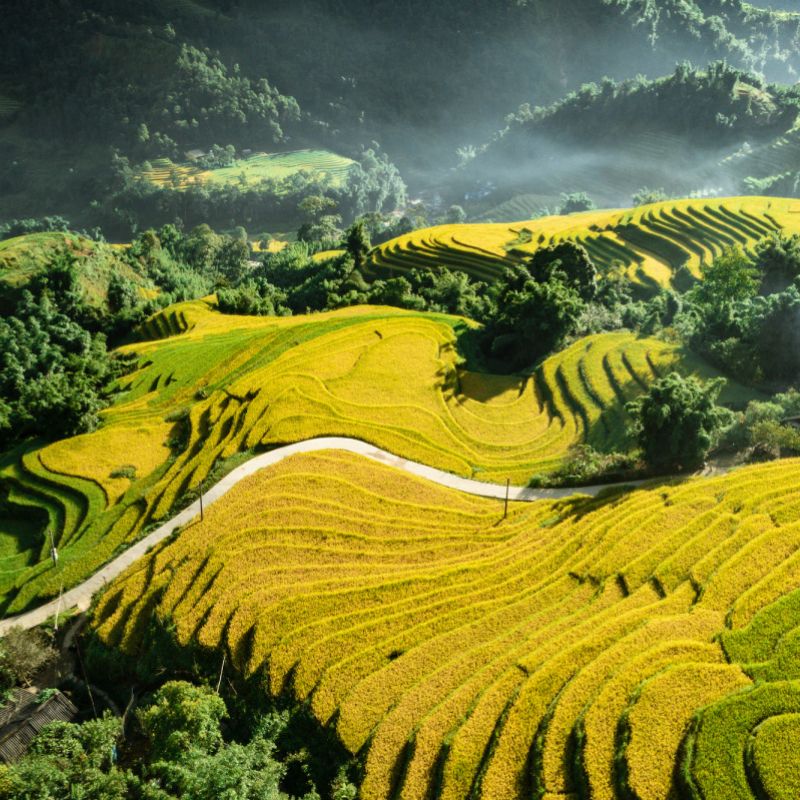
Moreover, the residents of Lao Chai Ta Van are notably hospitable and warm-hearted. Visitors have the option to stay overnight in the homes of local families and enjoy intimate meals. Each early morning, travelers can join the villagers in ascending to the terraced fields to marvel at the golden expanse. Before entering the village, it is necessary to purchase tickets at the toll station. The ticket prices include both the entrance fee to the village and the fee for visiting the ancient rock field in Lao Chai. The detailed entrance fees for Lao Chai are as follows:
- Adults: 75,000 VND
- Children: 50,000 VND
- Children under 1 meter: Free of charge
For Ta Van Village, the entrance fees are:
- Adults: 75,000 VND
- Children: 30,000 VND
- Children under 1 meter: Free of charge.
Highlights of Lao Chai Ta Van
The beauty of terraced fields
When you first see the terraced fields, especially between April and September when the entire area is painted a golden hue, you will instantly fall in love. These have been the fields for many years. The H’mong and Dao people have been cultivating rice on these historic terraced fields for generations as a habit and custom. The idea for commemorative photos comes from the large terraced fields’ poetic beauty.
Enjoy special foods
The customary fare has been mentioned, including the rolls with Guise leaves, the buffalo meat from the upstairs kitchen, the apple cider, the corn wine, and especially the red plum wine.You gradually get to know and feel attached to the locals through these kinds of simple meals.
Thang co
Traditional pot dishes like thang co are made with horse organs and meat. Cooked with a blend of twelve fragrant spices, such as ginger, cardamom, lemongrass, and cinnamon, it provides a filling and cozy experience. This is definitely a very special dish that’s not for fussy eaters.
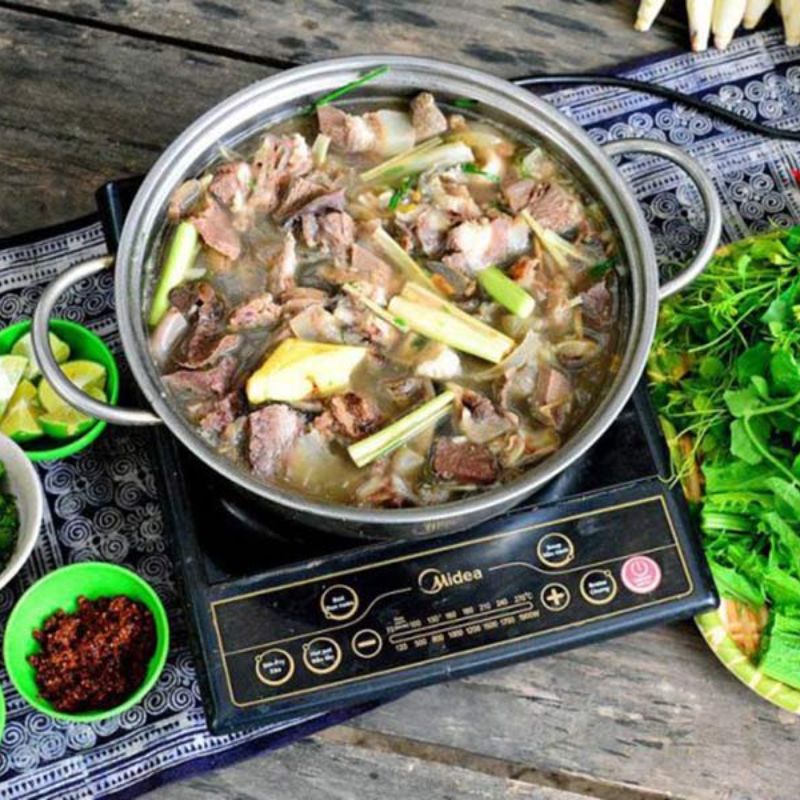
That lon cap nach
This recipe calls for a unique variety of pork from a small, regionally farmed pig breed. The meat is tender and flavorful because the pigs are allowed to roam freely in their natural habitat. This lamb chops, whether grilled, stir-fried, or prepared in a multitude of ways, has an incredibly unique flavor.
Rice with five colors
This dish of colorful glutinous rice symbolizes a distinct flavor with each hue. Natural substances such as pandan leaf, turmeric, gac fruit, and so on are the source of the five vivid colors. This visually stunning cuisine from Northern Vietnam is a delightful combination of flavors and textures in addition to being a visual feast.
Grilled fish stream
Lao Chai Village Sapa’s stream fish is renowned for having firm, flavorful meat with soft bones and no aftertaste of fish. This dish is ideal served with the mountainous delicacy known as “cham cheo” dipping sauce, which is made with local herbs and spices.
Join the local festivals
You will have the opportunity to witness the incredibly distinctive dance performance of ethnic monitories if you happen to be visiting during a local festival. It’s fascinating to investigate indigenous music, and some visitors have developed a deep affection for it.
After a long day at work, the villagers congregate around a sizable campfire in the middle of the community and sing and dance.
Visit the oldest village
The village of Giay people is the oldest village in Lao Chai-Ta Van, and it is divided into smaller villages as well. The village, which is home to the Giay ethnic group, is situated within the boundaries of Hoang Lien National Park. There, you will be able to take in the most breathtaking scenery, with tranquil villages nearly entirely hidden by lush greenery.
Lao Chai – Ta Van Village Nearby Tourist Attractions
Surrounded by breathtaking rice terraces and majestic mountains, these villages offer a glimpse into the rich cultural heritage of the Hmong and Dzay ethnic minorities. While exploring these villages, visitors can immerse themselves in the local way of life, admire stunning scenery, and discover nearby tourist attractions.
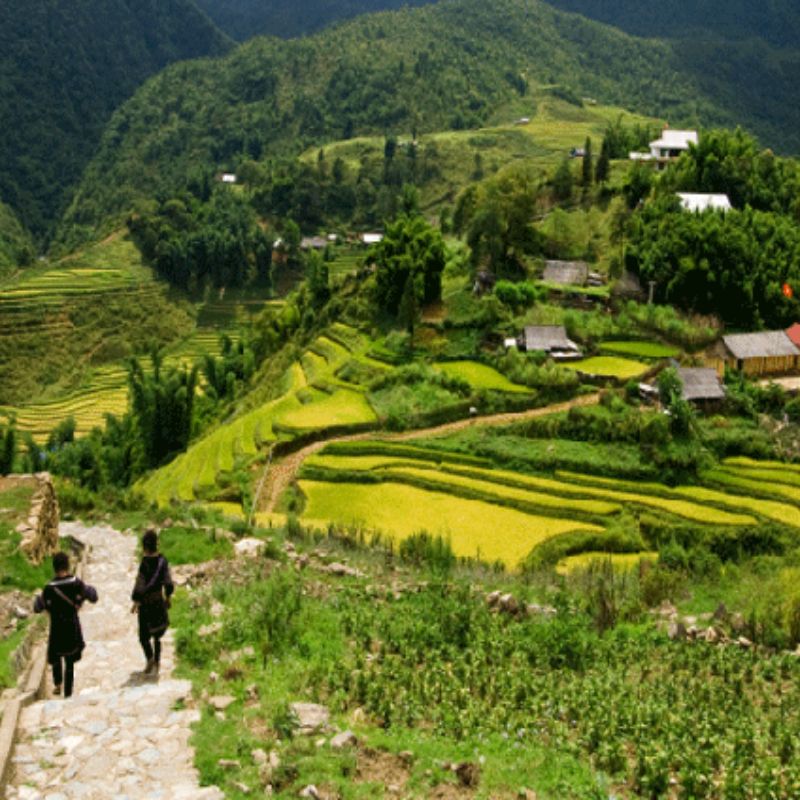
Sa Pa Town
Sa Pa Town, located approximately 10 kilometers from Lao Chai and Ta Van, is a bustling tourist hub. The town offers a vibrant market, souvenir shops, restaurants, and cafes. Visitors can explore the town’s French colonial architecture, enjoy local delicacies, and take in the stunning mountain views from the town’s highest point, Ham Rong Mountain.
Fansipan Mountain
For those seeking an exhilarating challenge, Fansipan Mountain, the highest peak in Vietnam, is a must-visit. Located approximately 19 kilometers from Lao Chai and Ta Van, Fansipan offers breathtaking views from its summit. Visitors can trek to the peak or take the cable car for a more leisurely ascent.
Trekking Trails
Lao Chai and Ta Van serve as excellent starting points for trekking adventures. The surrounding area boasts a network of well-marked trails that wind through rice terraces, bamboo forests, and traditional villages. Trekkers can choose from various routes, ranging from easy walks to challenging hikes, offering panoramic views of the valley and the surrounding mountains.
Cat Cat Village
A short walk from Lao Chai and Ta Van lies Cat Cat Village, another charming Hmong village. Visitors can explore the village’s traditional architecture, handicraft workshops, and a beautiful waterfall. The village is also known for its traditional dance performances and offers opportunities to interact with the locals and learn about their customs.
Muong Hoa Valley
The Muong Hoa Valley, where Lao Chai and Ta Van are situated, is a scenic valley dotted with traditional villages, rice terraces, and cascading waterfalls. Visitors can explore the valley by bicycle, motorbike, or on foot, taking in the stunning natural beauty and experiencing the local way of life.
These nearby tourist attractions offer a diverse range of experiences for visitors to Lao Chai and Ta Van, allowing them to explore the region’s natural wonders, cultural heritage, and outdoor activities.
Extra Tips
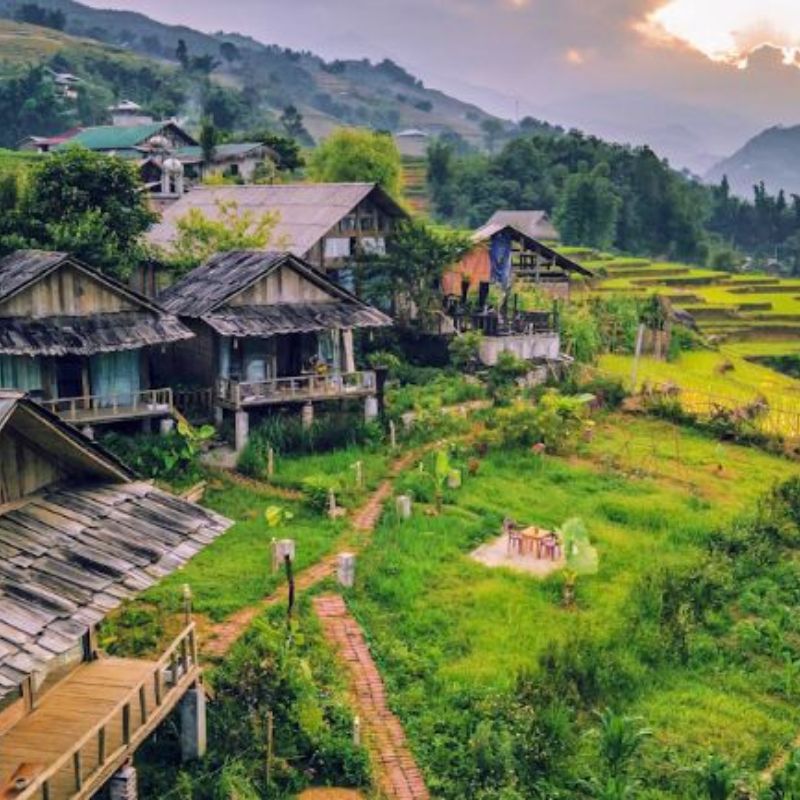
Lao Chai Ta Van Village travel from Sapa, Vietnam is a worthwhile experience, but to get the most out of your trip, you must be well-prepared. The following are some crucial points to remember:
- Since the temperature can drop significantly at night, make sure you pack warm clothes for the evenings to ensure your comfort.
- During busy times, reserve your homestay or hotel in advance to avoid last-minute hassles.
- Put on supportive footwear and cozy apparel.
- Always enquire about prices before making a purchase or using a service to ensure fair transactions and prevent being overcharged.
Nestled within Sapa’s breathtaking scenery, Lao Chai Ta Van Village is a mesmerizing location where culture and environment coexist. This undiscovered jewel provides an unforgettable trip into the center of Vietnam’s highlands with its terraced rice fields, rich customs, and hospitable community. Undoubtedly a hidden gem, Lao Chai Ta Van Village leaves a lasting impression on all who visit.
FAQs
Can visitors buy local handicrafts or souvenirs in Lao Chai Ta Van?
Certainly, visitors to Lao Chai Ta Van have the wonderful opportunity to purchase local handicrafts and souvenirs. The village, predominantly inhabited by the Black H’mong ethnic group, offers a variety of traditional crafts and handmade textiles. Travelers can explore local markets or buy directly from villagers, supporting the community and taking home unique keepsakes that reflect the rich cultural heritage of the region. From intricately woven textiles to handmade accessories, the local handicrafts in Lao Chai Ta Van serve as meaningful mementos of the authentic experiences encountered in this picturesque village.
Are there guided tours available for Lao Chai Ta Van?
Yes, there are guided tours available for Lao Chai Ta Van, providing visitors with a convenient and enriching way to explore the beauty and culture of this charming village. Many tour operators in Sapa offer trekking packages that include visits to Lao Chai Ta Van and nearby ethnic minority villages. These guided tours typically provide insights into the local way of life, opportunities to interact with the Black H’mong community, and a chance to trek through the stunning terraced landscapes.
How hospitable are the residents of Lao Chai Ta Van Village?
The residents of Lao Chai Ta Van Village, predominantly belonging to the Black H’mong ethnic group, are known for their exceptional hospitality and warmth. Visitors to the village often have the opportunity to stay overnight in the homes of local families, sharing meals and engaging in cultural exchanges. The residents go out of their way to make visitors feel welcome, providing an immersive experience into their daily lives and traditions. The hospitable nature of the community adds a special charm to the visit, allowing travelers to forge genuine connections and gain deeper insights into the rich cultural tapestry of Lao Chai Ta Van.
